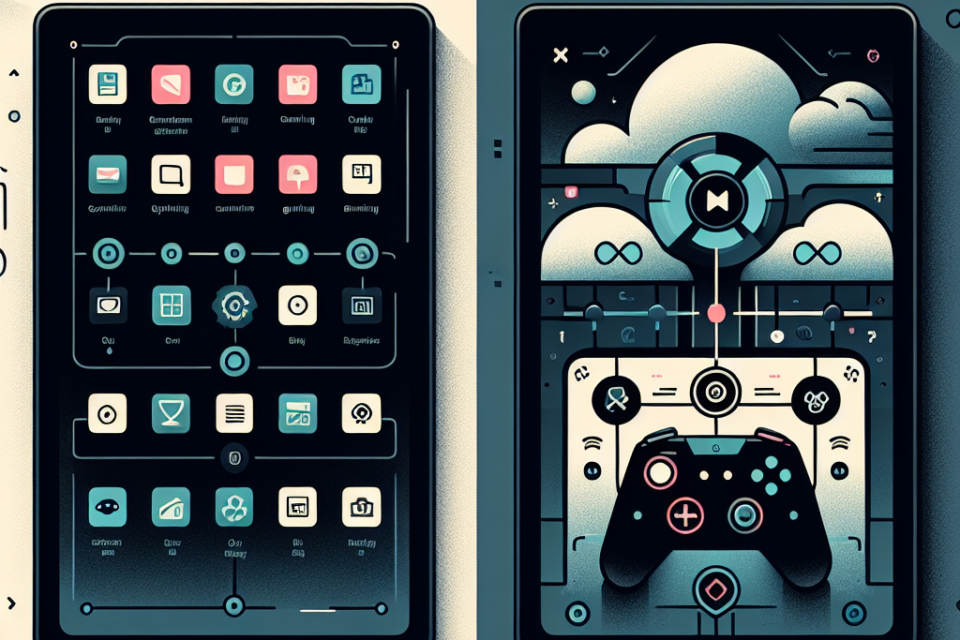How do tablets optimized for cloud gaming differ from standard tablets?

In today’s hyper-connected world, gaming has come a long way from traditional consoles and PCs. Cloud gaming, in particular, has revolutionized how games are accessed and played. With this evolution, tablets optimized for cloud gaming have been developed to meet the specific demands of gamers. But how do these specialized tablets differ from standard tablets? Let’s dive deep into the nuances that set them apart.
Understanding the Core Differences
Cloud gaming tablets are designed specifically for gaming through online streaming services, which involves playing games hosted on remote servers. On the other hand, standard tablets are multi-purpose devices suitable for various everyday tasks such as browsing, watching videos, and light gaming. Below is a table that highlights the primary differences between these two types of tablets:
| Feature | Cloud Gaming Tablets | Standard Tablets |
|---|---|---|
| Processing Power | High-performance processors designed to handle real-time graphics rendering and network latency | Moderate performance processors adequate for general use and basic gaming |
| Graphics | Advanced GPUs that can manage heavy graphical demands efficiently | Integrated GPUs for standard video and graphics tasks |
| Display | High-refresh-rate screens (120Hz or higher) and larger screen sizes for immersive gameplay | Standard refresh rate screens (60Hz) adequate for general use |
| Connectivity | High-speed Wi-Fi and 5G capabilities for reduced latency and stable connections | Basic Wi-Fi, often lacking high-speed or low-latency optimizations |
| Battery Life | Extended battery life specifically optimized for long gaming sessions | Average battery life designed for mixed-use scenarios |
| Cooling System | Advanced thermal management systems to keep the device cool during prolonged gaming sessions | Standard cooling mechanisms sufficient for moderate multitasking |
Processing Power
The processing power is critical for any gaming device. Tablets optimized for cloud gaming generally come equipped with high-performance processors such as Qualcomm Snapdragon or Apple’s M1 chip. These processors are capable of handling real-time graphics rendering, enhancing the overall gaming experience. In contrast, standard tablets feature moderate-performance processors that may struggle with high-end, resource-intensive games.
Graphics
For gamers, graphics play a pivotal role. Cloud gaming tablets usually have advanced GPUs (Graphics Processing Units) designed to manage the heavy graphical demands of modern games. These GPUs work in tandem with high-refresh-rate screens to deliver fluid and visually appealing gameplay. Standard tablets, however, come with integrated GPUs that are sufficient for regular tasks and casual gaming but may not suffice for graphic-intensive games.
Display
The display is another crucial element that differentiates cloud gaming tablets from standard ones. Cloud gaming tablets boast high-refresh-rate screens, often 120Hz or higher, providing smoother motion and reducing input lag. This makes actions in games more responsive, enhancing the overall user experience. In contrast, standard tablets usually feature a 60Hz refresh rate, which is adequate for browsing and watching videos but falls short for action-packed gaming.
Connectivity
Internet connectivity is paramount in cloud gaming. Tablets optimized for this purpose typically come with high-speed Wi-Fi and 5G capabilities to ensure low-latency and stable connections. This is vital to prevent lag and disconnections during gaming sessions. Standard tablets, however, often lack these advanced connectivity options and might experience network issues that can hamper the gaming experience.
Battery Life
Extended battery life is a significant advantage for cloud gaming tablets. They are designed to run for extended periods while maintaining optimal performance. These tablets typically have larger batteries and energy-efficient components that allow for prolonged gaming without frequent recharges. On the other hand, standard tablets usually have average battery life, adequate for mixed-use but not necessarily for long gaming sessions.
Cooling System
Advanced cooling systems are a hallmark of cloud gaming tablets. These devices often feature sophisticated thermal management technologies, such as vapor chambers or fan-based cooling, to keep the device’s temperature in check during extended gaming sessions. This ensures the tablet runs efficiently without overheating. Standard tablets generally have basic cooling mechanisms that suffice for regular use but may not handle the thermal requirements of intensive gaming.
User Experience
The user experience is tailored differently between cloud gaming tablets and standard ones. Gaming tablets often come with additional features like dedicated gaming modes, customizable buttons, and haptic feedback to enhance the gaming experience. They may also support peripherals such as external controllers, adding another layer of interaction. Standard tablets focus on a broader user base, offering features like e-reading modes, office productivity tools, and media consumption capabilities.
Software Optimization
Software is another crucial aspect where these tablets differ. Cloud gaming tablets usually come pre-installed with gaming-focused apps and services, and their operating systems are often optimized for gaming. This means fewer background processes and more system resources allocated for gaming. Standard tablets do not have this level of software optimization, which can lead to less efficient performance during gaming.
Price Point
One of the evident differences between these two types of tablets is their price. Cloud gaming tablets, with their enhanced hardware and specialized features, usually come at a premium price. Standard tablets, being designed for general-purpose use, are available at various price points to cater to a broader audience.
Conclusion
In summary, tablets optimized for cloud gaming offer superior hardware, specialized software, and enhanced user experiences tailored specifically for gaming. They feature high-performance processors, advanced GPUs, high-refresh-rate displays, robust connectivity options, extended battery life, and sophisticated cooling systems. These elements collectively ensure a seamless and immersive gaming experience. On the other hand, standard tablets are versatile devices suitable for a wide range of everyday tasks but may fall short when it comes to delivering a high-end gaming experience. Whether you are a dedicated gamer or a casual user, choosing the right tablet depends on your specific needs and how you intend to use the device.
Understanding these differences can help you make an informed decision, ensuring you get the best value and performance based on your requirements.
